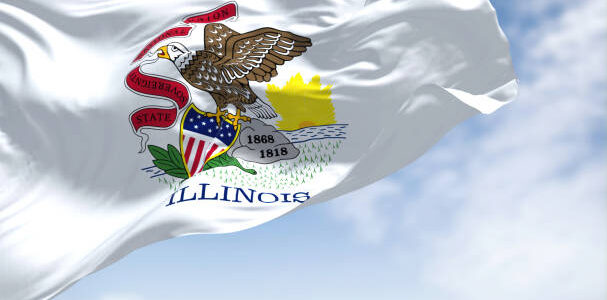BlogLine
Seventh Circuit seeks Illinois Supreme Court’s input on pollution exclusion in liability policy
5/1/25

By: Jason S. Callicoat and Josh W. Zhao
After a 2018 U.S. Department of Health and Human Services report about the rates of cancer in residents of Willowbrook, Illinois, due to ethylene oxide (EtO), Griffith Foods was sued by over 800 individuals over its emission of EtO. However, Griffith Foods had a permit issued by the Illinois Environmental Protection Agency (IPEA) to emit EtO.
In 2021, Griffith Foods demanded that National Union defend it against this litigation and filed suit against National Union in the U.S. District Court for the Northern District of Illinois, seeking a declaration that National Union was required to provide coverage.
National Union argued that the “pollution exclusion” within its policies applied to exclude coverage, as it barred coverage for “bodily injuries arising from the discharge of various pollutants, including toxic chemicals, into the atmosphere, unless the discharge was sudden and accidental.”
The parties moved for judgment on the pleadings, and the district court found that the pollution exclusion did not apply, as the exclusion was ambiguous, where Griffith was issued a permit by the IPEA to emit EtO.
National Union appealed to the Seventh Circuit, which recently issued its decision in Griffith Foods International, Inc. v. National Union Fire Insurance Co. of Pittsburgh, 2025 WL 1085216. The Seventh Circuit was hesitant to determine whether the “pollution exclusion” otherwise applied under Illinois law (although it found that, if the exclusion applied in the first instance, the “sudden and accidental” exception to the “pollution exclusion” did not apply, as emissions in the ordinary course of business were not “sudden and accidental.”
The Seventh Circuit contended that the prior decisions addressing this question were not consistent. In American States Insurance Co. v. Koloms, 177 Ill.2d 473 (Ill. 1997), the Illinois Supreme Court addressed whether injuries caused by carbon monoxide emissions from a defective furnace in a residential home fell within a CGL policy’s pollution exclusion. The Court held that the purpose of the exclusion was to avoid the “enormous expense and exposure resulting from the ‘explosion’ of environmental litigation.” The court therefore, would apply the exclusion only to injuries caused by traditional environmental pollution. However, in Erie Insurance Exchange v. Imperial Marble Corp., 2011 IL App (3d) 100380, an insured sought coverage for injuries allegedly caused by environmental emissions allowed by an Illinois EPA permit. In that case, the Illinois Appellate Court held that it was unclear whether permitted emissions constitute traditional environmental pollution that is excluded from coverage by the pollution exclusion. In Scottsdale Indemnity Co. v. Village of Crestwood, 673 F.3d 715, 716 (7th Cir. 2012), the Seventh Circuit held that a pollution exclusion barred coverage for injuries allegedly caused by a water contaminant, even though the amount of the contaminant in the water was below the maximum amount permitted by environmental regulations.
In light of these decisions, in Griffith Foods the Seventh Circuit certified to the Illinois Supreme Court the question of “what relevance, if any, does a permit or regulation authorizing emissions (generally or at particular levels) play in assessing the application of a pollution exclusion within a standard-form commercial general liability policy?” The Illinois Supreme Court has accepted the question and we will be watching for a decision, which will likely come in the late fall of 2025.
For more information, please contact Jason S. Callicoat at jason.callicoat@fmglaw.com, Joshua W. Zhao at josh.zhao@fmglaw.com or your local FMG attorney.
Information conveyed herein should not be construed as legal advice or represent any specific or binding policy or procedure of any organization. Information provided is for educational purposes only. These materials are written in a general format and are not intended to be advice applicable to any specific circumstance. Legal opinions may vary when based on subtle factual distinctions. All rights reserved. No part of this presentation may be reproduced, published or posted without the written permission of Freeman Mathis & Gary, LLP.
Share
Save Print
